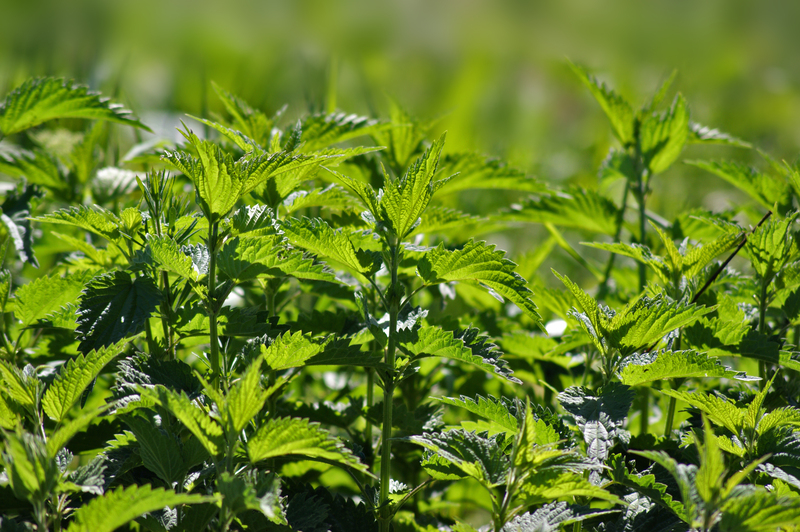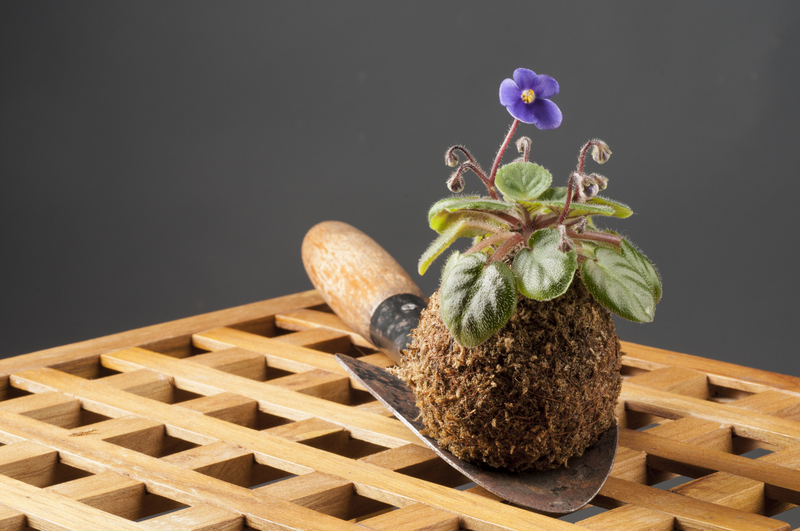Craft a vibrant herb garden that enhances your culinary creations
Posted on 25/08/2025
Craft a Vibrant Herb Garden That Enhances Your Culinary Creations
Are you looking for a way to elevate your cooking to new heights? One of the best secrets is as simple as stepping into your own backyard or even to your kitchen windowsill. Growing a vibrant herb garden not only brings luscious greenery into your home but also introduces a symphony of flavors to your culinary adventures. In this comprehensive guide, we'll walk you through how to craft an herb garden that truly enhances every recipe you create, transforming everyday meals into gourmet experiences.
Why Plant an Herb Garden?
Imagine walking outside and snipping fresh basil, rosemary, or mint, immediately infusing your dishes with bold aromas and bright flavors. A thriving herb garden is more than a source of ingredients--it's a living palette for your culinary masterpieces. Here's why creating your own herb haven is a must:
- Maximum Freshness: Homegrown herbs deliver unparalleled fresh flavors.
- Cost Effective: Reduce grocery bills by harvesting what you need.
- Eco-Friendly: Decrease packaging waste and your carbon footprint.
- Accessible: Have herbs on hand whenever inspiration strikes.
- Therapeutic: Gardening is proven to boost mood and lower stress.

Planning Your Culinary Herb Garden
Before you dig in, some thoughtful planning will help you design a flourishing herb garden that serves your kitchen all year round. Consider these questions:
- Space: Do you have a large yard, a small patio, or just a sunny windowsill?
- Light: Most culinary herbs require at least 6 hours of sunlight per day.
- Water: Herbs generally prefer well-drained soil; overwatering can lead to root rot.
- Purpose: Which herbs do you love to cook with most?
- Climate: Choose plants suited to your region and season.
Choosing the Best Culinary Herbs
Some herbs are almost indispensable in the kitchen, while others provide delightful surprises. For a truly vibrant herb garden that enhances your culinary creations, start with a mix of classic essentials and a few specialty favorites:
Essential Culinary Herbs:- Basil: Perfect for pesto, salads, and Italian cuisine.
- Parsley: Both flat-leaf and curly varieties add freshness and color.
- Rosemary: Highly aromatic, ideal for roasting meats and vegetables.
- Thyme: Subtle earthiness enhances soups and sauces.
- Mint: Great for teas, desserts, and Middle Eastern dishes.
- Cilantro: Vital for salsas, guacamole, and curries.
- Chives: Mild onion flavor for garnishing and eggs.
- Dill: Essential for pickling and light seafood recipes.
- Sage: Savory richness in stuffing, pastas, and poultry dishes.
- Oregano: Signature Mediterranean flavor, excellent in pizza and pastas.
- Lemongrass: Adds citrusy notes to Asian cuisine.
- Tarragon: Classic in French cooking and bearnaise sauce.
- Lovage: Celery-like taste, unique in soups.
- Chervil: Subtle anise flavor, ideal for delicate salads.
- Shiso: Japanese herb for sushi and salads.
Choose herbs that excite your palate and match the cuisines you love most.
How to Start Your Herb Garden: Indoors and Outdoors
Outdoor Herb Gardens
If you have a backyard or patio, growing herbs outdoors can be very rewarding. Follow these steps to set up your outdoor culinary herb haven:
- Select a Sunny Spot: Herbs love sun, so find a place with at least 6 hours of sunlight.
- Prep the Soil: Work in compost or organic matter to enrich and loosen soil for drainage.
- Plan the Layout: Group perennial herbs (like rosemary, thyme, sage) together, and keep annuals (like basil, cilantro, dill) separate for easier replanting next year.
- Water Regularly: Keep the soil moist but not waterlogged. Mulch to retain moisture and suppress weeds.
- Harvest Often: Snipping off leaves encourages bushier, healthier plants.
You can plant in raised beds, traditional plots, or decorative containers. Options like vertical gardens or herb spirals add beauty and conserve space.
Growing Herbs Indoors
Even with limited outdoor space, you can create a vibrant indoor herb garden. Here's how:
- Choose the Right Location: A south or west-facing windowsill provides ample light.
- Use Suitable Containers: Pots should have drainage holes. Group herbs with similar water needs together.
- Select Compact Varieties: Dwarf basil, curly parsley, and chives are ideal for indoor growth.
- Supplement Light: In low-light homes, use grow lights to keep plants healthy.
- Water with Care: Indoor herbs are prone to overwatering--allow the surface to dry between watering.
Incorporate your kitchen herb garden as a living, edible decoration--try hanging baskets, mason jars, or stylish ceramic pots.
Tips for a Thrive-Ready Herb Garden
- Pinch Regularly: Pinch tips to prevent bolting and keep plants productive.
- Feed Moderately: Herbs generally require less fertilizer than vegetables--overfeeding can diminish flavor.
- Control Pests Naturally: Use companion planting and neem oil to deter critters without harsh chemicals.
- Rotate Crops: In raised beds, rotate annual herbs each year to prevent soil diseases.
Did you know? Many herbs, like basil and mint, are prolific growers. Don't be afraid to harvest generously--frequent picking encourages lush regrowth!
Harvesting and Preserving Your Herbs
Knowing when and how to harvest herbs ensures peak flavor and continual growth:
- Harvest in the Morning: Essential oils are most concentrated after dew dries and before midday sun.
- Trim Carefully: Use scissors or pruners to take leafy stems, leaving the main plant intact.
- Don't Take More Than One Third: This keeps plants healthy and productive.
- Drying: Hang bunches upside down in a warm, shady spot, or use a dehydrator for quick results.
- Freezing: Chop and freeze in ice cube trays with olive oil or water, perfect for throwing into soups and stews.
- Infusing: Make flavored oils and vinegars to preserve aromas and create gourmet pantry staples.
Transform Your Cooking With Homegrown Herbs
Now comes the best part--using your vibrant herb garden to enhance your culinary creations! Fresh herbs can elevate even the simplest recipes. Here are some creative ways to incorporate your bounty:
Simple Cooking Enhancements
- Finishing Touch: Sprinkle chopped parsley, chives, or basil over soups, salads, or grains for a burst of freshness.
- Herb Butters: Blend soft butter with rosemary, thyme, or dill for a flavorful spread.
- Infused Oils: Warm olive oil with sage or oregano for drizzling over pastas and vegetables.
- Herbed Salts: Mix sea salt with finely chopped herbs and store in airtight jars for quick seasoning.
Herbs in International Cuisines
- Italian: Basil, oregano, parsley, and rosemary are the backbone of classic sauces, pestos, and salads.
- French: Tarragon, chervil, thyme, and basil create layers of flavor in chicken, fish, and egg dishes.
- Middle Eastern: Mint, cilantro, and parsley star in tabbouleh, falafel, and vibrant sauces.
- Asian: Lemongrass, Thai basil, and cilantro are essentials in stir-fries and curries.
Herbal Drinks and Sweets
- Fresh Mint Tea: Steep handfuls of mint for a soothing, digestive drink.
- Basil Lemonade: Muddle basil with lemon and sugar for a unique twist.
- Lavender Shortbread: Incorporate lavender or rosemary into cookies and cakes.
Creative Herb Garden Ideas for Every Space
You don't need a traditional backyard to grow a culinary herb garden. Here are some imaginative solutions for every living situation:
- Vertical Herb Walls: Hang planters on fences or balcony rails to maximize small spaces.
- Pallet Gardens: Reuse wooden pallets as rustic containers for herbs and flowers.
- Hanging Baskets: Perfect for trailing herbs like thyme and oregano if floor space is limited.
- Window Boxes: Grow a mix of herbs on kitchen sills for instant access while cooking.
- Mason Jar Planters: Create a mini indoor garden in glass jars set on shelves or counters.
Herb Garden Maintenance Checklist
- Inspect for pests and remove damaged foliage weekly.
- Prune regularly to encourage bushiness.
- Remove flower buds on basil and mint to prevent bitter flavors.
- Fertilize lightly each month during the growing season.
- Rotate containers for even sunlight exposure.

Frequently Asked Questions About Herb Gardening
How long do culinary herbs take to grow?
Many herbs, like basil, cilantro, and chives, can be harvested in just 4-6 weeks after planting. Perennial herbs like rosemary, sage, and thyme take longer to establish, but once mature, they'll produce year after year.
What are the easiest herbs for beginner gardeners?
Basil, parsley, chives, mint, and oregano are forgiving and adapt well to various environments--perfect for novices.
Can I grow herbs all year round?
Absolutely! With indoor growing setups--windowsills or grow lights--you can enjoy fresh culinary herbs even in winter.
Conclusion: Elevate Your Culinary Creations With a Homegrown Herb Garden
Crafting a vibrant herb garden isn't just a hobby--it's an investment in your health, happiness, and culinary creativity. With a rainbow of herbs ready to snip and savor, you'll find inspiration and flavor at your fingertips every day. Whether you're a seasoned chef or a kitchen beginner, growing your own herbs is a flavorful journey that continually rewards you and your loved ones with the freshest tastes imaginable.
Start small, dream big, and let your herb garden transform your meals into edible masterpieces. Happy gardening and happy cooking!

